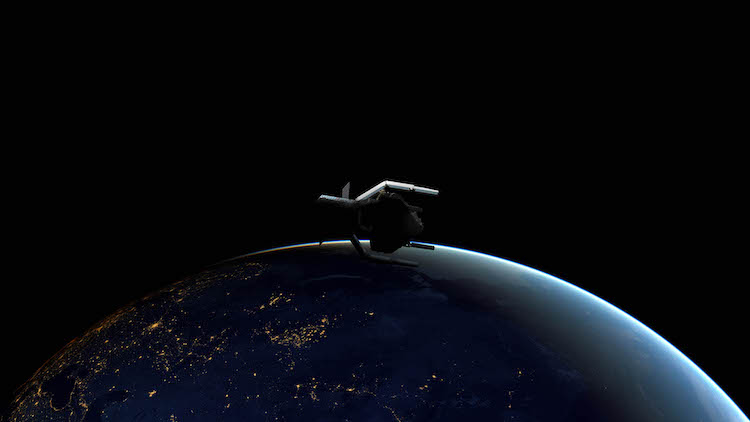European Space Agency to launch robot to clean up space
The European Space Agency is planning to send a robot out into space to clean it of debris, which mainly consists of the countless satellites sent into orbit over the past few decades.
The vast majority of these “junk” satellites – communications, weather, military – have operational lifetimes lasting a few years – about five to 10 years, after which there is no system for bringing them back or clear them in any way. (See simulation of space debris around Earth below.)
Some have previously proposed to build robots that can travel to those obsolete satellites to perhaps fix them or make use of them somehow or at least maintain them so they are operational for longer, but that is an idea that is still in development, although also mentioned as part of ESA’s plan.
ESA, meanwhile, has now commissioned what will be the first space mission to remove an item of debris from orbit, planned for launch in 2025. The robot or spacecraft is called ClearSpace-1.
The mission is being procured as a service contract with a startup-led commercial consortium, to “help establish a new market for in-orbit servicing, as well as debris removal”, says ESA.

Following a competitive process, a consortium led by Swiss startup ClearSpace – a spin-off company established by an experienced team of space debris researchers based at Ecole Polytechnique Fédérale de Lausanne research institute – will be invited to submit their final proposal, before starting the project next March.
Luc Piguet, founder and CEO of ClearSpace, says: “This is the right time for such a mission. The space debris issue is more pressing than ever before. Today we have nearly 2,000 live satellites in space and more than 3,000 failed ones.
“And in the coming years the number of satellites will increase by an order of magnitude, with multiple mega-constellations made up of hundreds or even thousands of satellites planned for low Earth orbit to deliver wide-coverage, low-latency telecommunications and monitoring services. The need is clear for a ‘tow truck’ to remove failed satellites from this highly trafficked region.”
At Space19+, ESA’s Ministerial Council, which took place in Seville, Spain, at the end of November, ministers agreed to place a service contract with a commercial provider for the safe removal of an inactive ESA-owned object from low-Earth orbit.
Supported within ESA’s new Space Safety programme, the aim is to contribute actively to cleaning up space, while also demonstrating the technologies needed for debris removal.

Jan Wörner, ESA director general, says: “Imagine how dangerous sailing the high seas would be if all the ships ever lost in history were still drifting on top of the water.
“That is the current situation in orbit, and it cannot be allowed to continue. ESA’s Member States have given their strong support to this new mission, which also points the way forward to essential new commercial services in the future.”
Luisa Innocenti, heading ESA’s Clean Space initiative, says: “Even if all space launches were halted tomorrow, projections show that the overall orbital debris population will continue to grow, as collisions between items generate fresh debris in a cascade effect.
“We need to develop technologies to avoid creating new debris and removing the debris already up there.
“NASA and ESA studies show that the only way to stabilise the orbital environment is to actively remove large debris items.
“Accordingly, we will be continuing our development of essential guidance, navigation and control technologies and rendezvous and capture methods through a new project called Active Debris Removal / In-Orbit Servicing – Adrios.
“The results will be applied to ClearSpace-1. This new mission, implemented by an ESA project team, will allow us to demonstrate these technologies, achieving a world first in the process.”

The ClearSpace-1 mission will target the Vespa (Vega Secondary Payload Adapter) upper stage left in an approximately 800 km by 660 km altitude orbit after the second flight of ESA’s Vega launcher back in 2013.
With a mass of 100 kg, the Vespa is close in size to a small satellite, while its relatively simple shape and sturdy construction make it a suitable first goal, before progressing to larger, more challenging captures by follow-up missions – eventually including multi-object capture.
The ClearSpace-1 “chaser” will be launched into a lower 500-km orbit for commissioning and critical tests before being raised to the target orbit for rendezvous and capture using a quartet of robotic arms under ESA supervision. The combined chaser plus Vespa will then be deorbited to burn up in the atmosphere.

